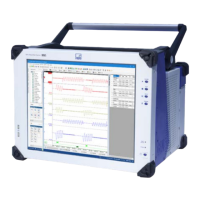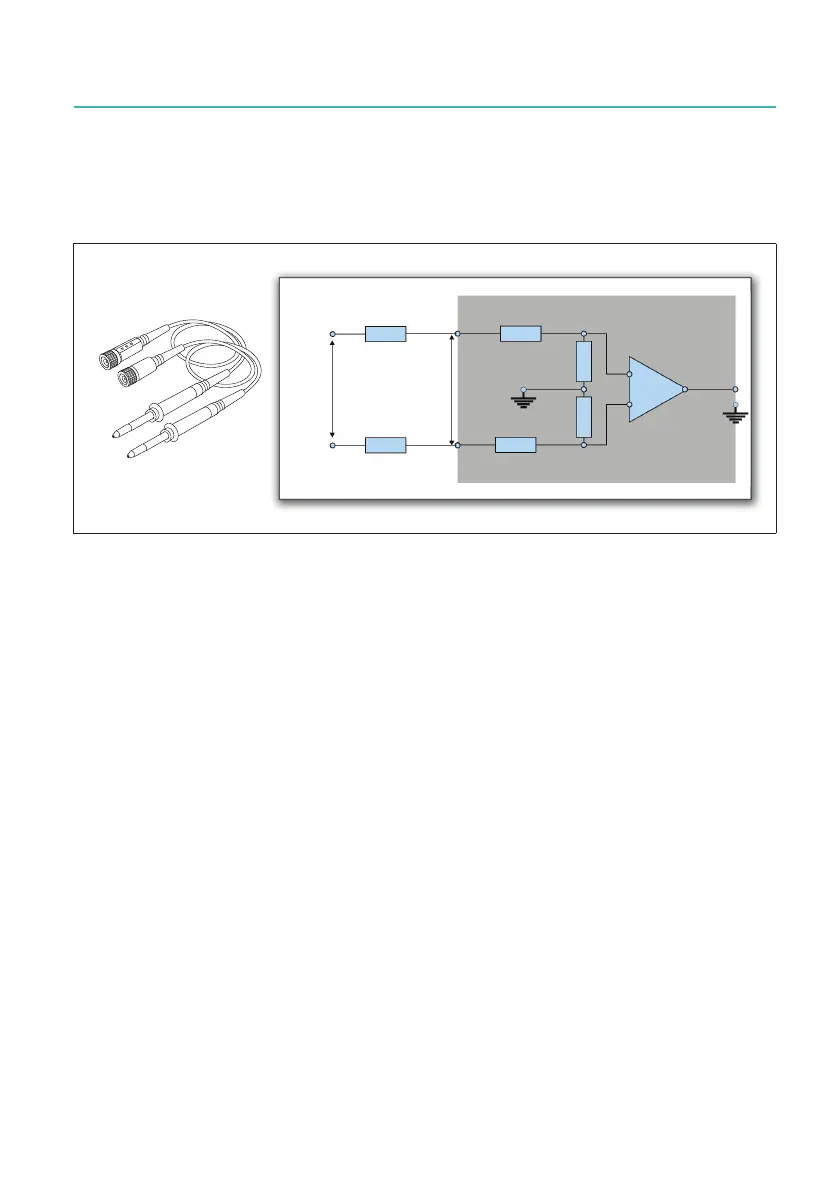GEN7iB
343
UNDERSTANDING INPUTS AND USAGE OF PROBES
UNDERSTANDING INPUTS AND USAGE OF PROBES15
15.2.3 Passive, differential matched isolated voltage probes
Passive, differential matched isolated voltage probes are used in series with differen-
tialampliersanddivideadifferentialinputsignalbyaspecicfactor.
[8
GLII
8
GLII
3DVVLYHSUREH
*1'
'LIIHUHQWLDODPSOLILHU
0
0
.
.
..
Fig. 15.9 Typical example of a passive differential voltage probe
Passive, differential matched isolated voltage probes are – in theory – simply a pair of
“normal” voltage probes.
They add passive in-line resistors in series with both the positive and the negative
inputsofadifferentialamplier.Togetherwiththeinputresistoroftheamplier,they
form a voltage divider on each input side so that the voltage in series with the ampli-
eritselfisdivided.Asthereisalsoacapacitivecomponentinthisdivider,theinput
capacitanceoftheamplierandtheso-called“compensationrange”oftheprobeneed
to match.
As two of these probes are used, one with each input terminal, the probes themselves
need to “match” as closely as possible. Otherwise, the two input terminals are divided
differently. Therefore, the probes are typically manufactured (and sold) in pairs and
called “matched”. By selecting higher resistance probes, the divider ratio increases
so that large input ranges are possible. Passive, differential matched isolated voltage
probes typically decrease the overall accuracy and the CMRR of the system.

